Day 4 of a 4-day Spring Migration tour in Norfolk. It was mostly bright and sunny again, with a bit more hazy high cloud in the afternoon. The light ESE wind picked up a bit in the afternoon too but was not as cold today, just enough to stop if from getting too hot. We spent the day down in the Norfolk Broads.
It was a long drive down to Hickling this morning but we broke the journey with a short stop at Ludham Bridge, when we spotted a Barn Owl over the grazing marshes by the road. We stopped in the layby and got out to watch it flying round hunting. Presumably out at this time of day, it had hungry young to feed somewhere. We saw it drop down once but when it eventually came up again it had nothing in its talons.
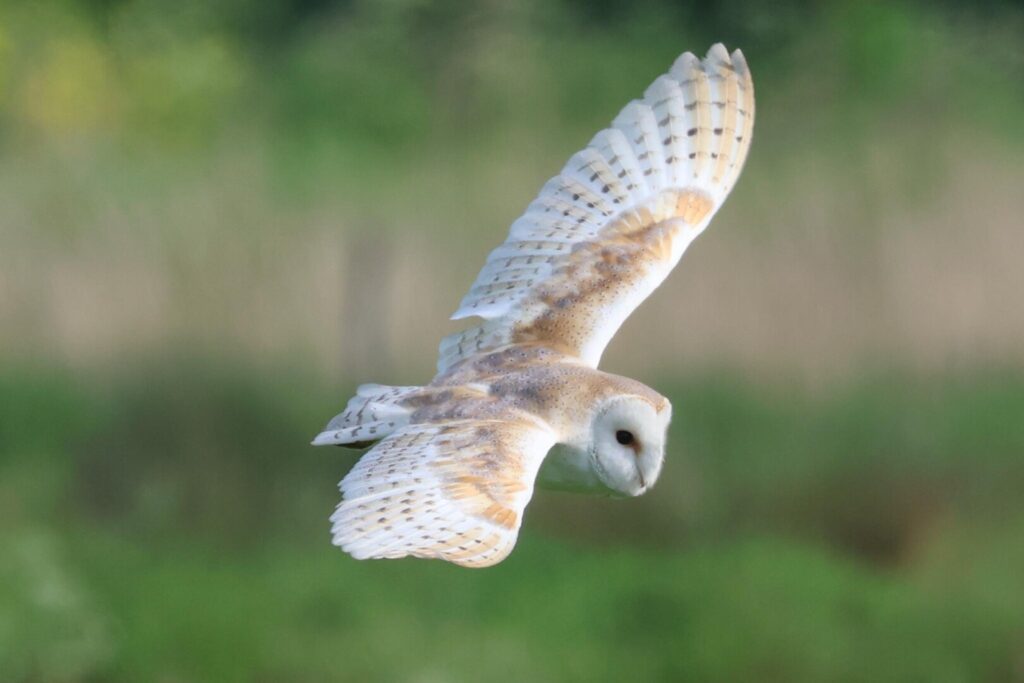
We drove on to the NWT reserve at Hickling Broad. As we walked down towards Brendan’s Marsh we met a couple of staff coming the other way who told us about all the things we had just missed! Thankfully we had seen Black Tern and Osprey on previous days and we could soon catch up with everything else.
There were lots of geese on the first pool, mostly Greylags but a single Pink-footed Goose was standing with them. Not obviously injured, but presumably there was some reason why this bird hadn’t flown north to Iceland with the others. There were various ducks, including a sleeping pair of Teal, and a few waders, most notably a displaying pair of Little Ringed Plovers.
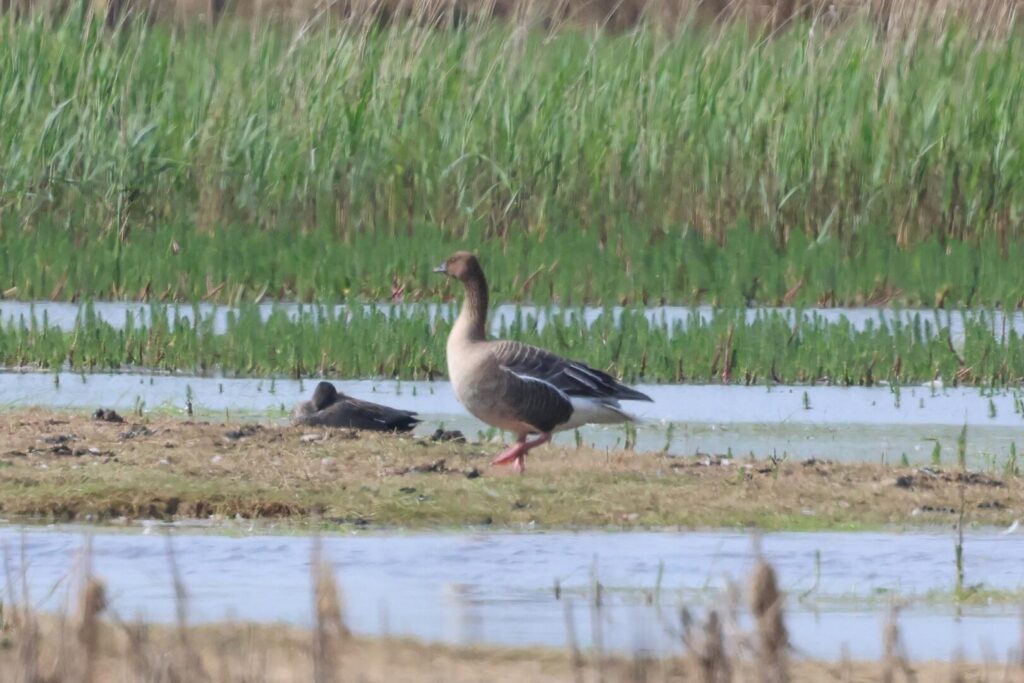
There were a couple of other birders on the first platform so we continued on along the path, scanning the marshes over the bank from the gaps in the bushes. There were lots of Cormorants loafing on the islands and a young Great Black-backed Gull, but we couldn’t see any different waders which might have dropped in overnight.
The second platform was free, so we climbed up to scan from there. One of the first birds we found was a smart drake Garganey. We could hear it calling too, before it flew off further down. A Chinese Water Deer waded across through the water too.
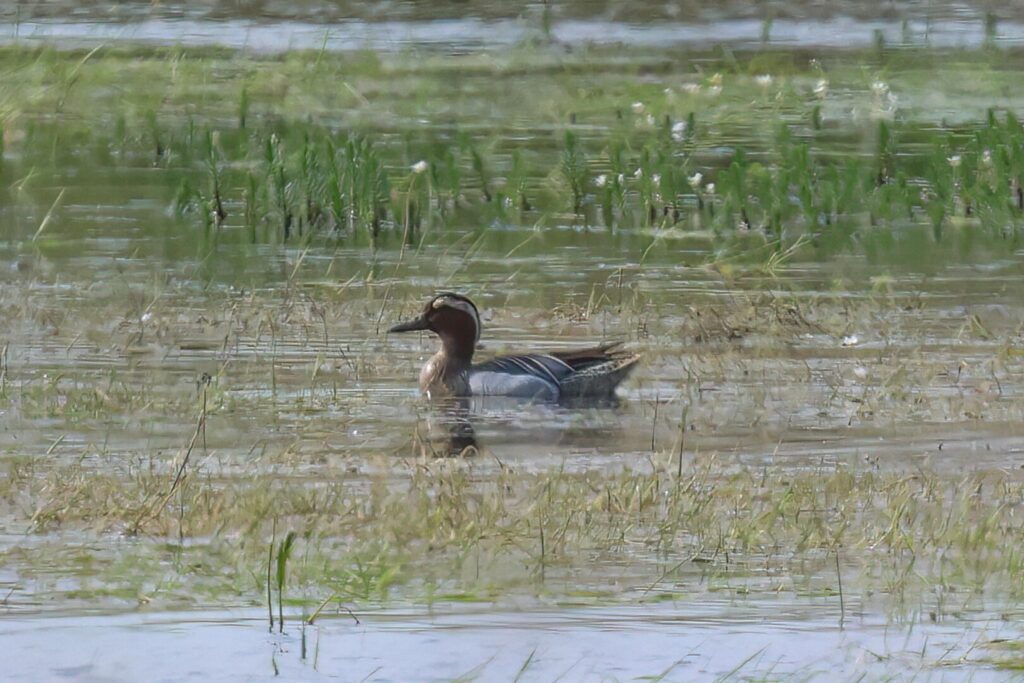
Common Crane was one of the birds we had apparently missed earlier but now we found one standing on a bank in the edge of the reeds behind the pools. It kept bending down to feed and disappearing in the reeds, but we could see its head and neck when it stood back up.
We were just starting to descend from the platform when we heard more Cranes calling behind us. From a gap in the trees a little further up, we looked across to see two groups of five Cranes over the trees. Five dropped back down out of view but the other five flew straight towards us calling and came almost directly over our heads, before one peeled off and dropped down into the reeds. Magical!
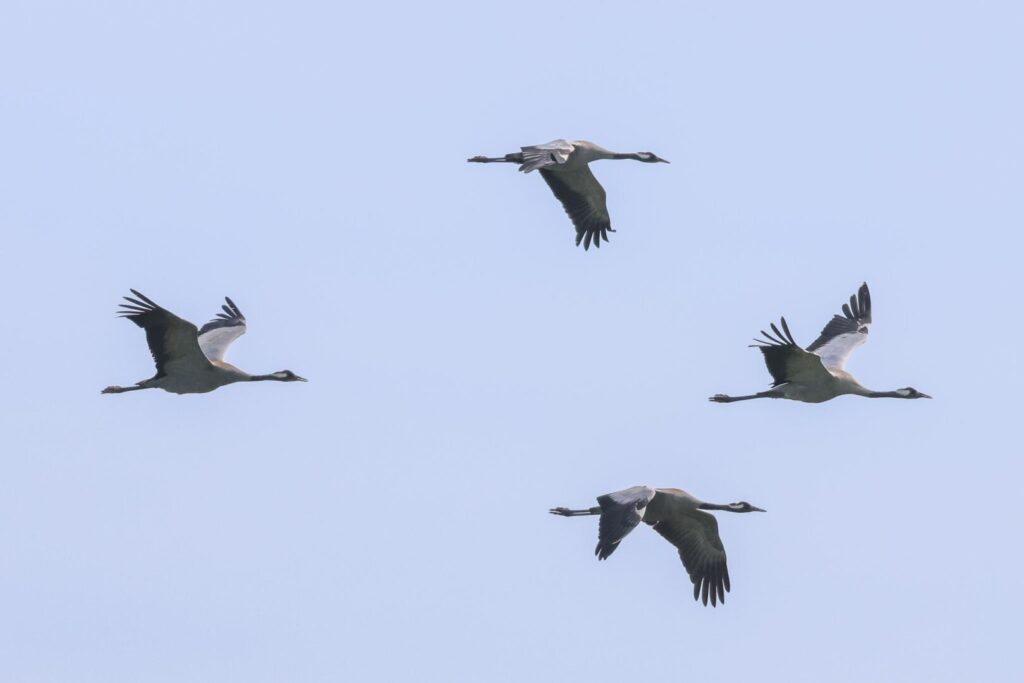
We continued on to the path at the far end and up onto the bank where we had a good view over the reeds. A Bittern was booming from the reeds out in front and we had a brief glimpse of one disappearing through the trees beyond. We could still see the Crane on the bank, although a bit more distantly from here.
The other two birders were also here and they shouted as they picked up two more Bitterns flying high over the back of the reedbed. We didn’t know where to look at first, as two Cranes flew up from the reeds much closer to us at the same time. The Bitterns remained airborne for some time, one following the other, seemingly heading off towards Potter Heigham before turning and flying back in and dropping behind the dead trees. Shortly after, we saw another Bittern fly over the reeds a bit closer. It was a good day for Bitterns!
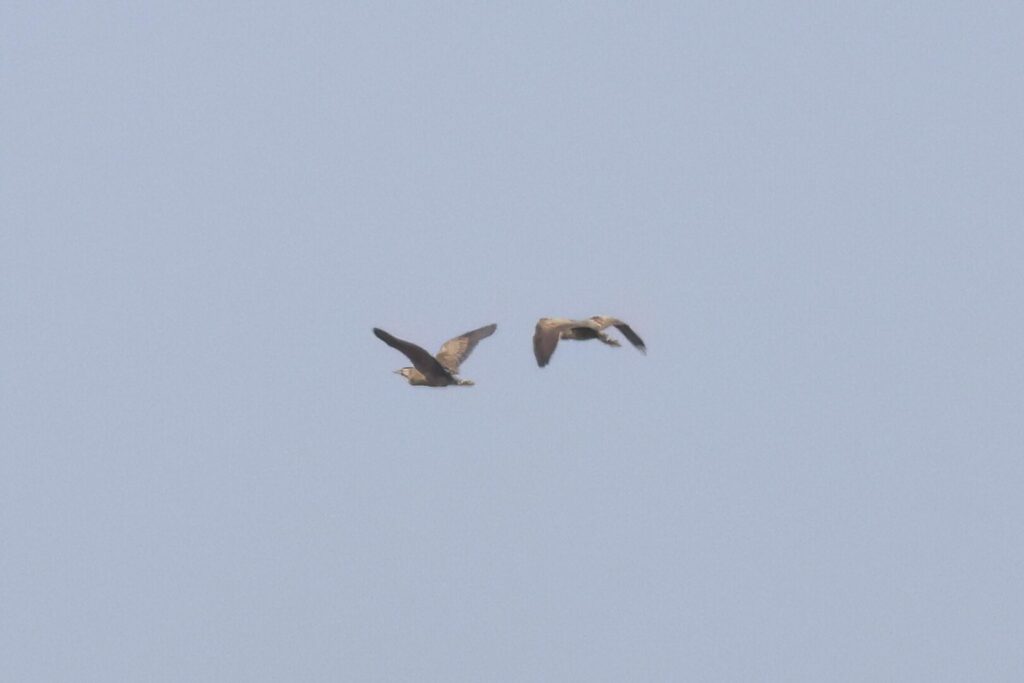
Another shout, and this time a young White-tailed Eagle was circling in the distance, up in the sky over the back of the Broad. Through the scope you could make out what it was and see that it was being mobbed by a Marsh Harrier which looked tiny by comparison.
Further investigation afterwards has confirmed that this was not one of the released and satellite tagged birds from the Isle of Wight. It appears to be a juvenile wild Continental bird and possibly a ringed Dutch bird which toured the coast back in April. It may be trying to find a way back from the most easterly region of the country!
A female Garganey appeared on the pool, followed by the male, although he landed some distance away. It looked at first that they weren’t on speaking terms, but then the female swam over and we watched them mating.
There wasn’t much Hobby activity here so far this morning. One was perched in the dead trees and a couple more were hawking in the distance beyond. A couple of Great White Egrets flew out of the trees and landed on the small pool at the far end of the ditch in front of us.
There were a few passage waders moving, though mostly not dropping in and probably continuing on their way in the nice weather. Five Ruff flew over, followed by several Ringed Plover. Two Greenshanks did drop in on the pool to feed.
There had been a couple of brief sightings of the Purple Heron coming up out of the reeds here but it had appeared to drop down behind the trees. There was also a report now that the eagle had landed in the trees beyond the Broad. We decided to walk round via the Whiteslea track.
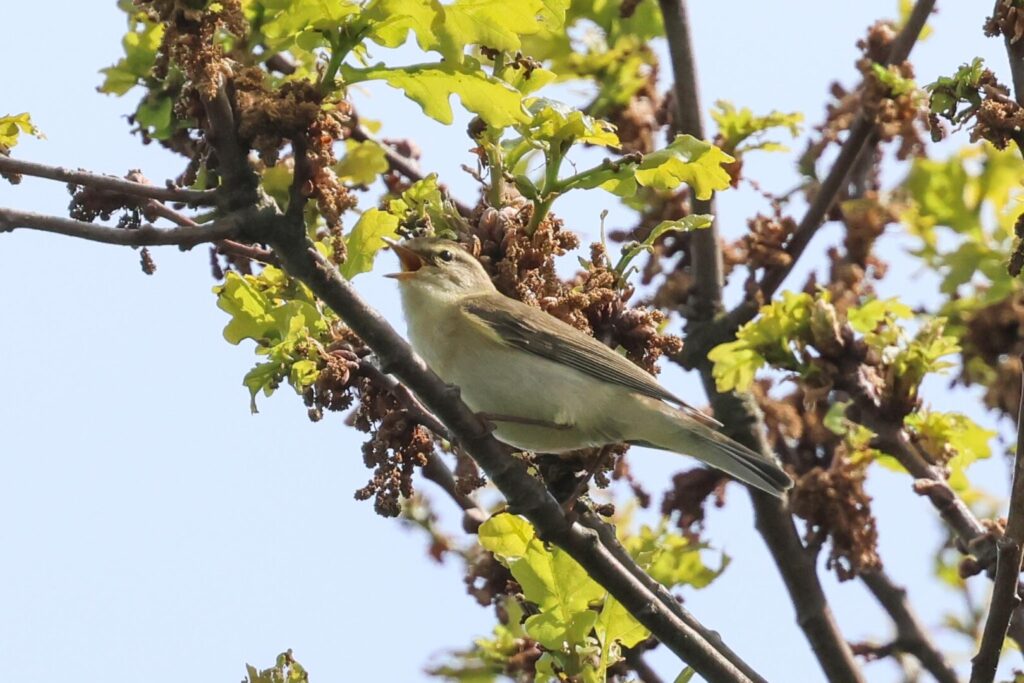
On our way back we stopped to look at a Willow Warbler singing in the top of an oak tree by the path. There were lots of damselflies around the hedge in the sunshine – mainly Azure and Large Red, but we also saw a few Blue-tailed and Variable Damselflies with them.
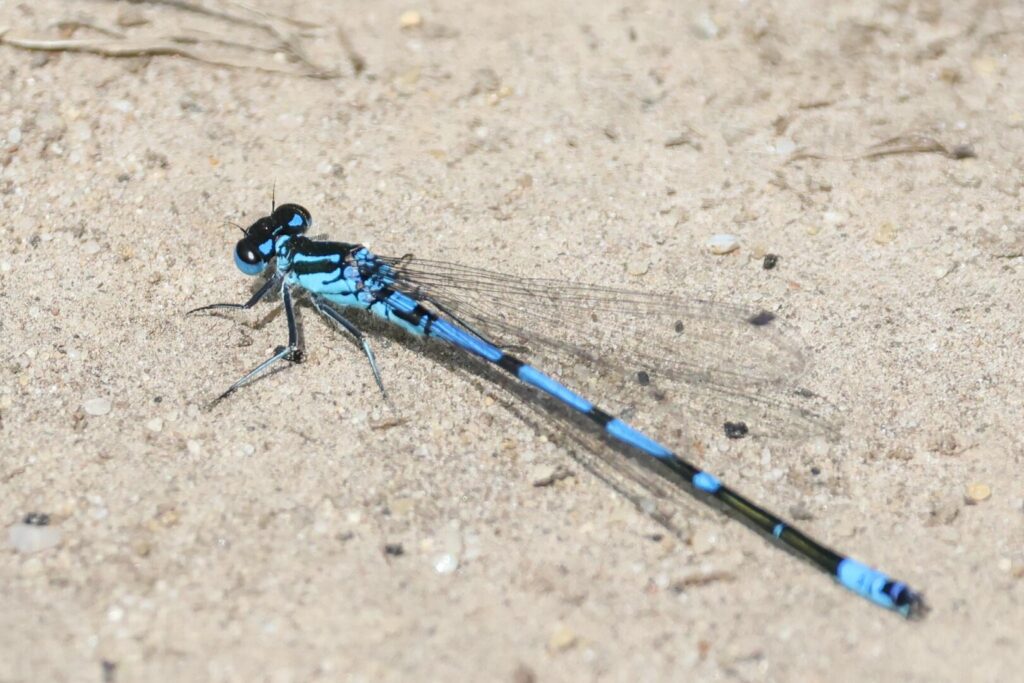
There were a couple of Hobbys hawking overhead as we climbed up onto the bank along the track overlooking the other side of Brendan’s Marsh. Another Crane was standing in the young reeds the other side of the track. Heron activity over by the trees seemed to have dropped off though but we kept scanning the reeds as we walked along. Two more Bitterns were booming along here. A mating pair of Hairy Dragonflies landed on the path ahead of us.
We had just been talking about Swallowtail butterflies and how we were in the window for them to start to emerge when we were told that the first of the year had been seen this morning. It was a bit breezy along the start of the path by the Broad, so we figured our best chance was further on, round the corner in the lee of the trees. A couple of Bearded Tits pinged and flew up out of the reeds briefly.
Our luck was in and sure enough, when we got out of the wind we found two Swallowtails flying over the reeds. One flew up over the trees and disappeared, but the second landed down in the reeds in front of us. It kept flying up and chasing after any other passing butterfly – several Peacocks, a Brimstone – before landing again, sunning itself. Great to see, especially the first of the year.
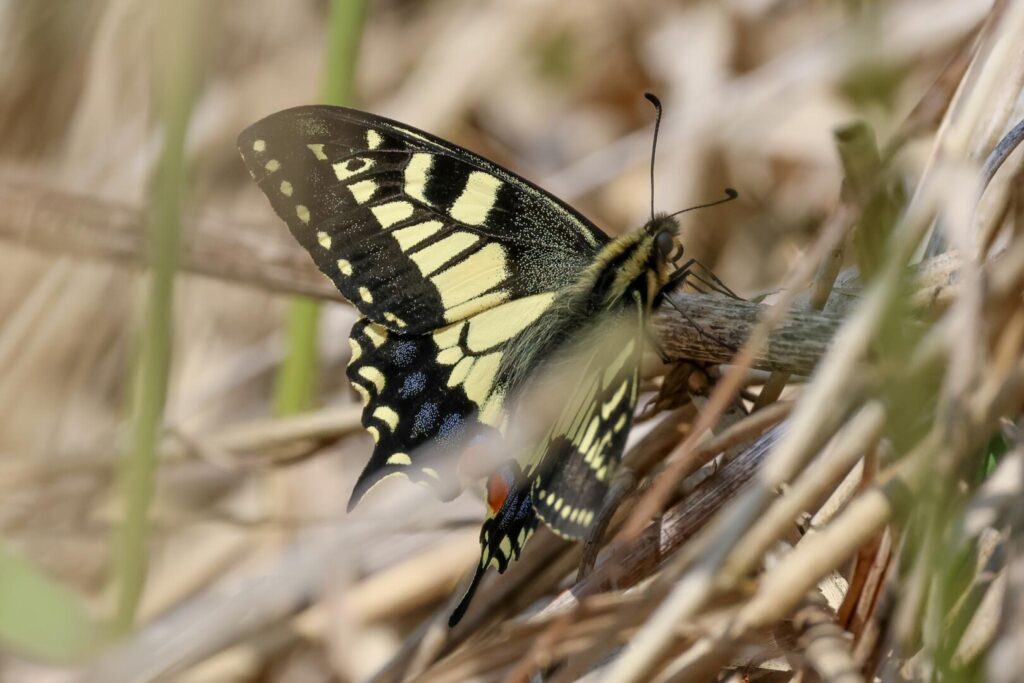
Another Bittern flew up out of the reeds briefly as we walked on. We stopped at the viewpoint overlooking the Broad but couldn’t see any sign of the eagle now. A couple of Common Terns were hovering and diving round the edge of the Broad in front of us and there were lots of Mute Swans out on the water. As we walked back round on the path past the hides, three more Hobbys were hawking overhead.
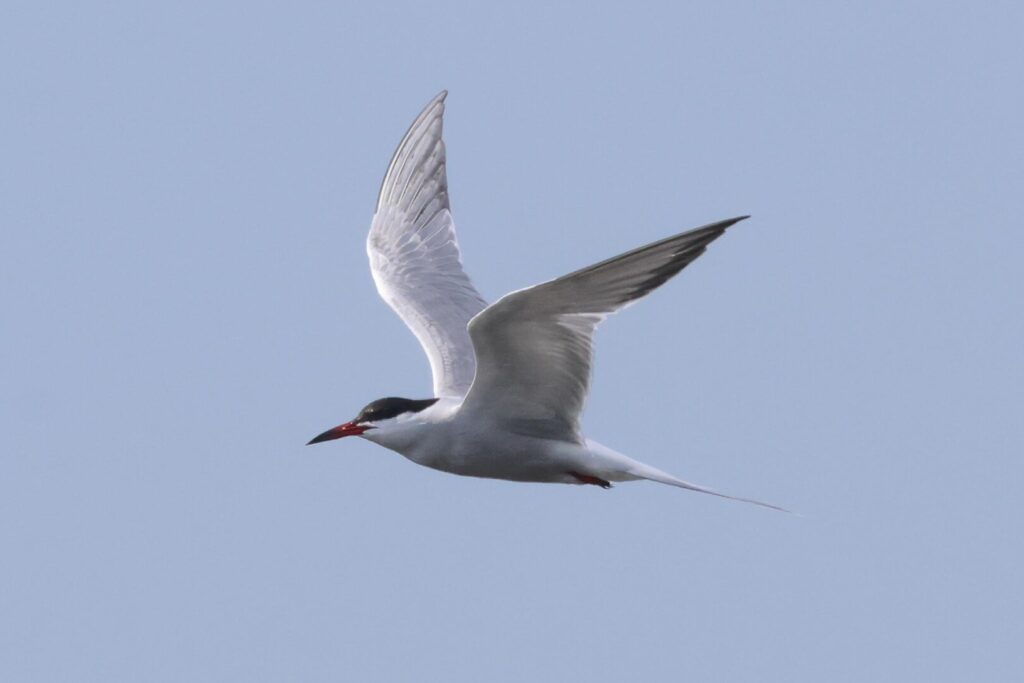
It was time for lunch, so we headed for the Visitor Centre. It was lovely here on the picnic tables in the sunshine and out of the breeze. The Ronaldo’s ice cream was even sampled by some! A Blackcap and a Garden Warbler were both singing in the trees.
We had just finished lunch when we had a phone call from a couple of friends to say that the eagle had flown across over the trees on the south side of the Broad and appeared to land again. We had originally thought about going to the coast to look for migrants in the dunes, but they had been out there earlier and not seen anything out of the ordinary. So instead, we thought we would see if we could get some closer views of the eagle round at Potter Heigham, and look to see if there were any waders there.
There was no sign of the eagle in the trees when we arrived. The water level in the pools on this side looked too high for waders too. As we walked along the path past The Holt, lots of Marsh Harriers were circling up and flying back and forth over the reeds and a couple of Common Buzzards flew through the wood too. It looked like a couple of Lesser Black-backed Gulls stooped at something a couple of times in the trees but we couldn’t find an angle where we could see what it was along the edge of Candledyke. The gulls lost interest, so we walked on.
We hadn’t gone far when we looked back again to see all the corvids come up on Heigham Holmes but still couldn’t see anything. Then one of the group picked up the White-tailed Eagle as it came up from behind the bushes. It was much closer to us compared to our earlier views but unfortunately going away all the time, chased by a Marsh Harrier as well as several of the corvids, before it dropped down again out of view.
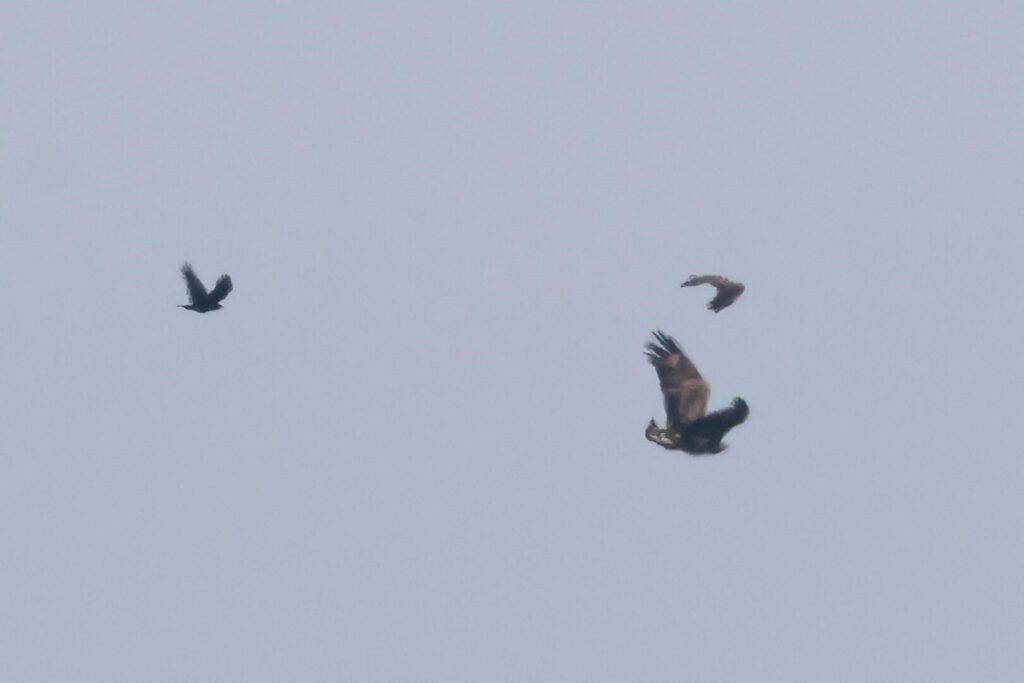
There were a few Lapwings displaying over the far side of the pools, so we pressed on round, thinking there should be some exposed mud. Half way along, we found a small area but there was just a single Redshank on it. We were thinking about given up, but saw another Redshank come up from the last pool so continued on to the end. We were glad we did.
First we spotted a Common Sandpiper out in the middle, then a second one emerged from the rushes along the side. This pool looked ideal for a Wood Sandpiper and we were just talking about it when we had a glimpse of a slim-looking wader deep in the rushes. It couldn’t be, could it? The bird was difficult to see at first, but we set the scopes up and eventually a lovely spangled Wood Sandpiper emerged into the open. The one of the regular migrant sandpipers we hadn’t managed to see on the previous days.
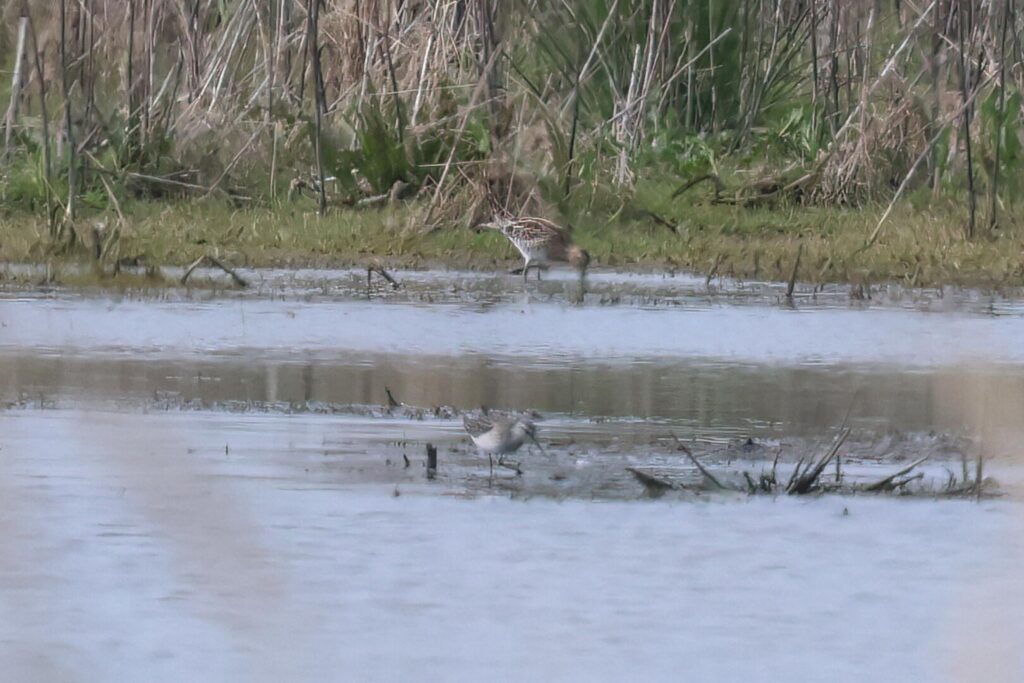
A bonus Common Snipe then appeared, feeding on the far shore behind it too. That was a nice way to end the day, so we walked back round the way we had come. A couple of Marsh Harriers drifted past over the reeds – we had certainly seen a lot of those today.
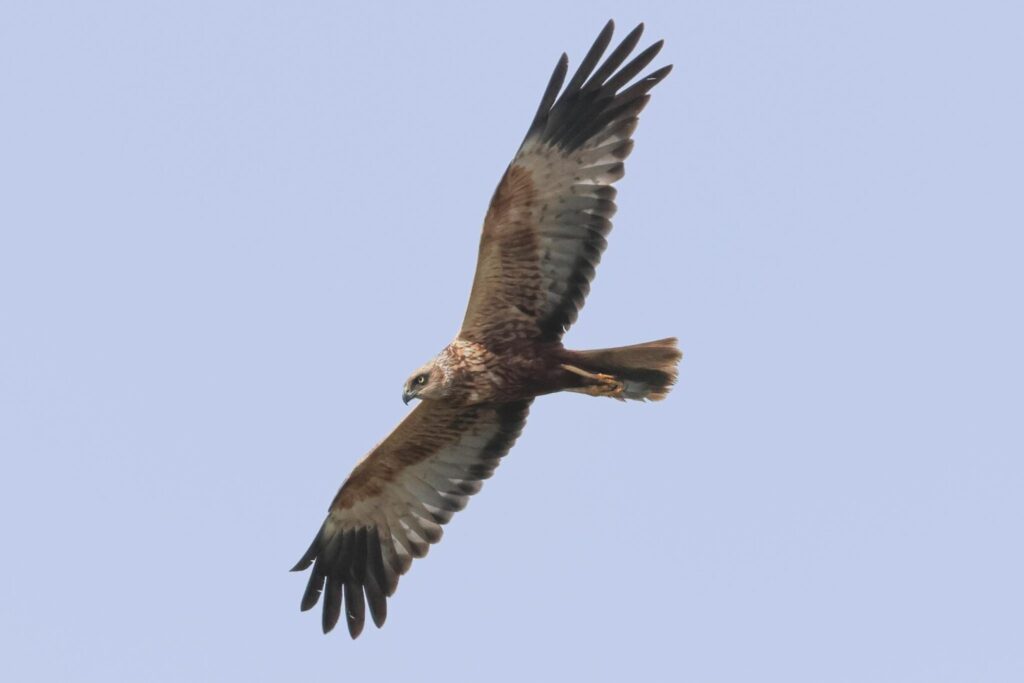
It was then a long drive back to Hindolveston where we said our goodbyes and all went our separate ways. It had been a very enjoyable four days with some good spring migration seen.
















